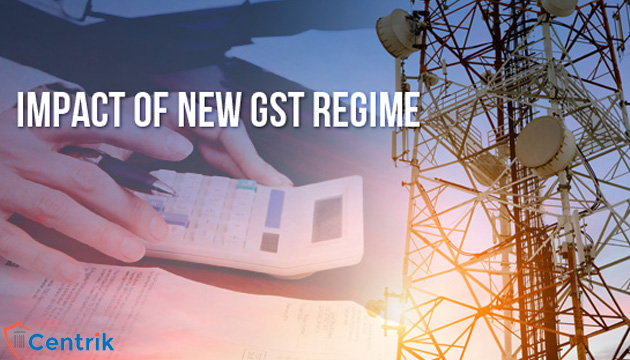
Telecom is one of the most basic and critical infrastructure services and has a massive outreach to more than a billion subscribers across geographical boundaries. Telecom faces several issues under the current indirect tax regime and, therefore, the sector has high hopes from the proposed GST regime. However, the model GST law does not appear to bring an end to the issues being faced by the telecom sector.
Tax trigger on the telecommunication sector commenced since the inception of the service tax, While the telecom sector has been a major contributor in indirect tax revenue generation for the government, it is facing various issues on the indirect tax front.
In this article we will discuss the probable impact of the proposed GST on the telecom sector.
GST Regime
There are three segments in which the sector currently operates:
- telecom service providers—it involves base stations, receivers, etc. which are positioned to create the network enabling transmission of data/voice
- passive infrastructure service providers providing base transceiver station (BTS) cabins, battery banks, etc. used to support the (active infrastructure) telecom service providers.
- telecom equipment manufacturers.
So GST will going to affect differently to all those telecom service/ goods provider. In this article our principal focus would be to know the impact on telecom service provider.
A) Registration
GST manadates a service provider to take statewise GST registration instead of a centralised service tax registration unlike under the current regime. The multiple statewise registration would tremendously increase efforts and cost of compliance for telecom companies (telcos).
B) Rate
Currently, telecom services are subject to a 15% service tax. The GST rate is expected to increase to 18% and telecom companies may pass on this to customers. The GST has a provision for “Necessity Services” which can attract a lower rate.
“Given the importance communication services in our lives, they could easily qualify as necessity services.
C) Return
Telcos would be required to file at least three returns on a monthly basis per registration (i.e. statewise registration) under GST, unlike current tax regime of filling half yearly return in service tax.
D) Place of Supply
It needs to pointed out that GST is a destination tax. For prepaid mobile or Internet the place of supply is the location where the pre-payment is received. In case of recharges through net banking or cards, the place of supply is the location of service recipient on the record of the supplier.
E) Input Tax Credit
One of the major concerns for telecom service providers is the denial of Cenvat credit on telecom towers. This has resulted in tax cascading, thereby rendering the service uncompetitive. The issue is whether goods constituting the telecom tower qualify as “capital goods” or “input. There is no specific mention on admissibility of Cenvat credit on telecom towers being plant and machinery used for the purpose of business. However, under the Model GST law, a specific restriction has been provided for input tax credit of goods and services used for construction of immovable property.
F) Power generators
Another major impact on the telecom sector is on account of deferment of applicability of GST on petroleum products. The telecom sector has to maintain uninterrupted supply of services, which necessitates the use of power generators. Given that the applicability of GST on petroleum products has been deferred, the same would continue to attract central excise duties and states sale taxes. This would result in massive cascading impact on the telecom sector.
G) Nonalignment of circles with states:
The telecom sector is regulated by the Telecom Regulatory Authority of India (TRAI) and various licences required to provide telecom services are granted by the Department of Telecommunications (DoT). Telcos are required to obtain circlewise licences from DoT for providing some telecom services. Circlewise licences are not aligned with the geographical boundaries of states and one circle may cover multiple states.
For instance, the Delhi NCR circle covers the local areas served by Delhi, Ghaziabad, Faridabad, Noida and Gurgaon telephone exchanges, i.e., covers Delhi and parts of Haryana and Uttar Pradesh. Currently, telcos maintain circlewise accounting to account for circlewise revenue for payment of licence fee. Whereas, under the GST regime, the accounting would be required to be maintained statewise.
H) IT and Accounting System
The above mentioned issues and complexities would necessitate telcos to make massive technological changes in the IT and accounting systems to maintain statewise accounting.
I) Conclusion
The challenge of the day has been to search for new cost-effective ways to roll out telecom services in rural India. There is a great untapped potential in the rural market for telecom companies.
In order to achieve the desired goal of expanding the telecom business and accomplishing socio-economic development, it is essential that the cost of the telecom service provider goes down, which will result in lower tariff rates and broader consumer base. Considering an overall objective, the proposed GST framework seems to have addressed the concerns of the telecom sector.
The seamless flow of credit under the GST regime will help reduce the overall cost and eventually the benefit can be passed on to the end-user by lowering tariff rates. Strong policy support from the government is crucial for overall development.




 join For Updates
join For Updates